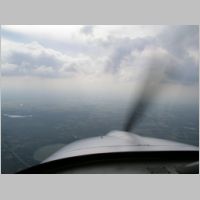
|
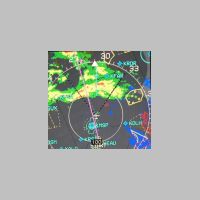
|
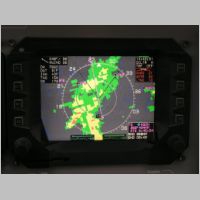
|
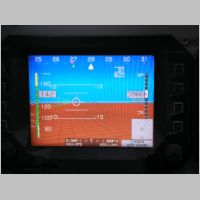
|
Upon
getting ready to depart KABR for Bozeman, KBZN, we were sitting on the
Taxiway with fogged up windows, watching the weather downlink on the
screen in front of us. For those who remember the discussions
about defroster fans, I have a data point for you. I have a 1.5"
or 2" fan in my panel, just to the Left of the support bar. It's
on whenever the master is on. This fan did work, but it didn't
put out enough air for the really soggy environment we were in.
The temps were in the 40's or 50's, with lots of water outside
the plane, and lots of moisture inside due to unloading and loading in
the rain. In the end, all I was afforded before takeoff was a
small canteloupe sized clear area in the lower center of the
windshield. I reasoned that as long as I had enough visibility
for the takeoff roll, I shouldn't need more, as I'd be in fully IMC
conditions soon after takeoff. So with throttle full forward, I
launched into the sky. Not wanting to play around on the first
hard IFR trip with the plane, I set the TruTrak (Digiflight II VSGV)
for a 1000fpm climb and turned the heading bug on course. You may
wonder why I didn't just set the course on the Chelton and let it
control the autopilot. Well, it was just *after* this trip that I
got home and found out the fix for my long awaited Chelton/Autopilot
fine-tuning for GPSV. Previously, it worked great using GPSS,
but there was too much gain between the autopilot and Chelton for the
GPSV to work well. It hunted and oscillated up and down too much.
Flying on an IFR plan, I didn't want to bust any altitudes, so I
just relied on the TruTrak stand-alone (with GPSS used at some times).
After I got home, I found that unlike the Sorcerer, the DFIIVSGV
has it's GPSV gain setting in a hidden, privileged mode config
area...and after getting in there and turning down the gain, I now have
full GPSS/GPSV function that is very solid. If you're a
Chelton/TruTrak buyer, and get ready to fly your system, I may be able
to help give you some initial settings to start with that you can tweak
to your preference.
Shortly into the climb, I requested a turn to avoid some of the red
areas of the storm. It was approved and with 10 degrees of
deviation we pressed on. I kept it rich of peak for a while,
choosing to spend less time with the required close monitoring of
temps, and more time focusing on the tasks at hand. Looking at
the screenshots above and below, you can see the performance was very
good. Remember that at the time of flying this, I had an airspeed
error of -6.5 to -7.5kts. So the real performance figures were
something like: 165kts TAS / 179kts GS @ 7660' DA using 14.2gph.
It would have been nice to pull this back to get a little better
fuel burn, but I'll live with that. I could still make out my
wingtip, so the clouds weren't THAT bad. :) It was raining most
of the time while in the clouds, but the unnerving thing was the OAT.
As we got to 8000', the OAT started to go below freezing.
Looking forward on the cowl, everything was still liquid.
Looking out at the wings, there wasn't anything we could see near
the root, but we were unsure if we were seeing the slightest bit ice on the leading edge of the tips. It was hard to
tell if it was just a reflection, or something actually there. Since it wasn't changing, and the temp was staying
pretty stable, we decided to just stay where we were at and see how it
went. At least in SD, if we would have NEEDED 6000', there wasn't
a terrain problem. They do keep you fairly high, but it's mostly
for radar coverage. After leaving the side of the last cloud in
our path, we were in VFR conditions with at least 50 mile vis.
There was still an overcast, and sure enough, the controller
asked me to go to 10,000'. I decided to comply unless it took me
into the clouds, because it definitely would be icing there...and
cancel IFR if I had to, in order to keep out of more clouds
unnecessarily if they contained ice. As it turned out, I was able
to level off at 9,950' and call it "good enough" and stay out of the
clouds, so we pressed on with our IFR plan.
A note about the RV-10 and IFR Flying:
I have now verified for myself, the RV-10 is a fantastic IFR
plane. No, it's not to twitchy, touchy, or light on the controls.
It's very stable, and has the power to climb you above some bad
weather and the speed to get you through it quickly. It's every
bit as good as any other plane I've flown, and with it's great economy
cruise, it will have few successful challengers. If it weren't
safe, how could I take those 2 beautiful faces in the pictures below.
As it is, they just go about watching their movies, oblivious to
any stress in the front seat. |
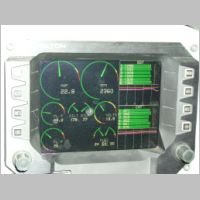
|
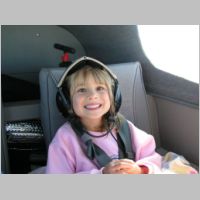
|
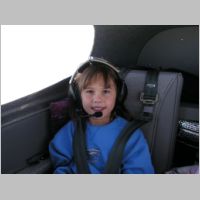
|
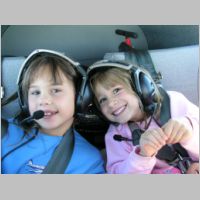
|
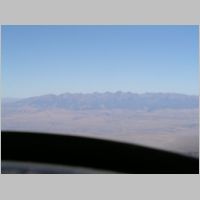
|
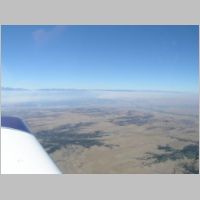
|
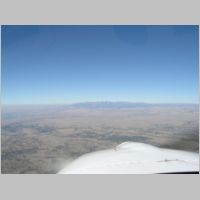
|
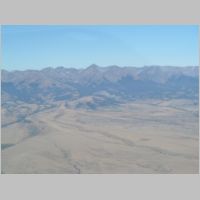
|
| Approaching
Bozeman, we got a little bit of a surprise. The fires I've heard
about, but never seen, were causing problems with vis around the
mountains. So they assigned me 11,000', and had me fly the
airways between a couple of mountain ranges, to a VOR and fly a radial
inbound to the airport. I was getting worried that this would end
up being a smoky instrument approach, but Bozeman was VFR and I was
able to see the airport fine and complete a visual approach with no
issues. The only catch was we were now pretty high, so we had a
lot of descent to make to get to the ground. We grabbed a car at
Arlin's Aircraft Service and went to town for some food, and topped off
with fuel in the plane. |
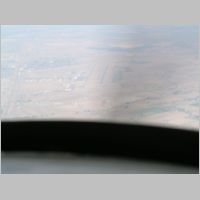
|
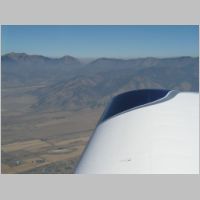
|
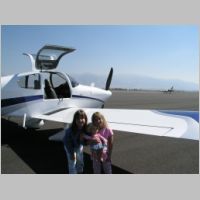
|
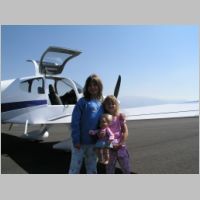
|
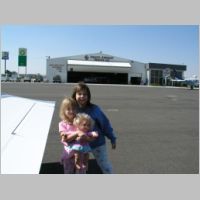
|
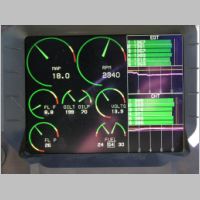
|
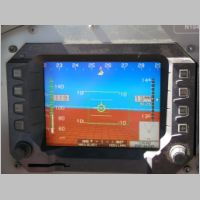
|
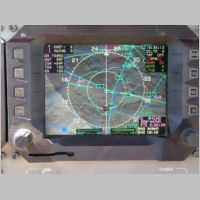
|
| On
the way out of Bozeman, we stayed on an IFR plan, being unfamiliar with
the area and having dozens of firefighting TFR's in our path.
When we contacted Salt Lake Center, we were hoping for 12,000'
for our enroute cruise, but they wanted 14,000' if we wanted to go
direct. They could go a little less if we flew airways.
Well, wanting to give our Oxygen kit some more time, I gladly
chose 14K, which up until this point was the highest I'd been in a
small plane. You can see what it did for our performance and
economy though....157kts TAS @ 8.8gph. Not too bad for a 4
passenger plane. Some day I'll have to fly the box at this
altitude and see how far my airspeed is off at 14,000'. The
6.5-7.5 kts was at 6,500', so I assume there will be more error up
high. ** Note: by doing a quick and dirty static port mod, I was
later able to reduce this to 4kts error at 6,500'. I have new
static ports from Cleaveland that I still need to install and
try...they have a domed head and stick out a small amount. My original
ones were flush. |
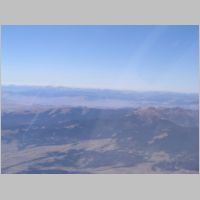
|
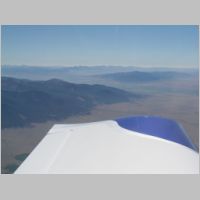
|
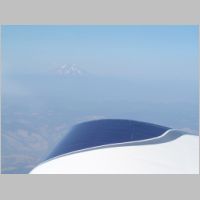
|
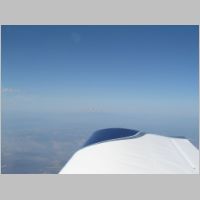
|
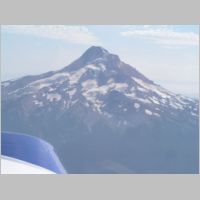
|
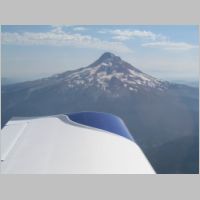
|
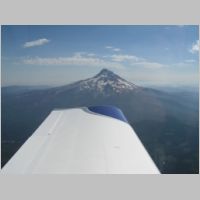
|
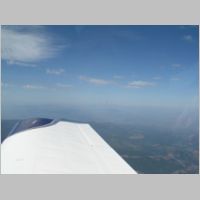
|
| As
you can see from the photos, the terrain was pretty cool, and when
flying into the portland area, they route you right by Mt. Hood, via a
fix for terrain separation. I wish I could have spent more time
flying around the mountains on this vacation, but this gives more
reason to go back soon. |
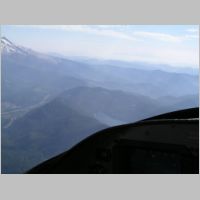
|
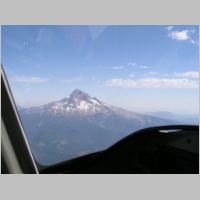
|
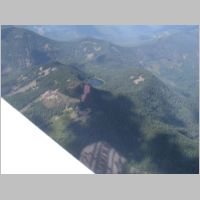
|
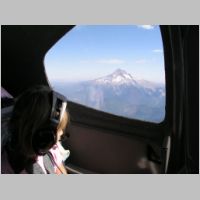
|
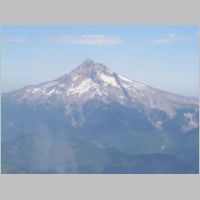
|
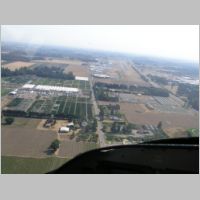
|
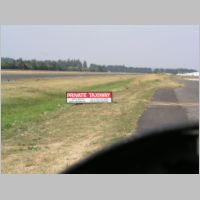
|
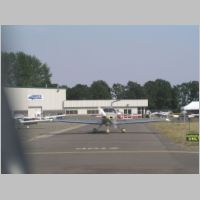
|
| The
homecoming was pretty good. Truthfully, it was not a very large
part of our reason for coming, but it was nice to see a bunch of RV's
and people. There were a few RV-10's there, and it was great to
talk to their owners. We didn't stay for any meals, and on the
2nd day we didn't make it back to Van's before the party had been
wrapped up, so we missed out on the rest of the homecoming. |
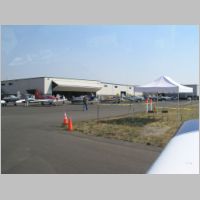
|
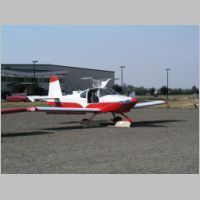
|

|

|
| That
Sunday we spent the day driving out to the coast, and up the coast
through Astoria (Cool bridge!) and into Washington state. The
kids got to touch the Pacific in a couple of spots, and we just
generally toured around in Ed's Suburban. Thanks Ed! Ed and
family were our hosts for this trip, and they are all wonderful people.
Ed's building an RV-10 and will complete it "in November" (I keep
wondering which year though - just had to get that little jab in :)
) |
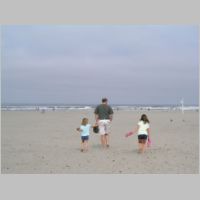
|
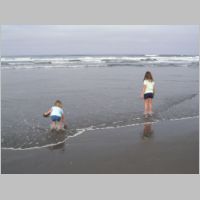
|
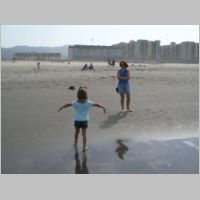
|
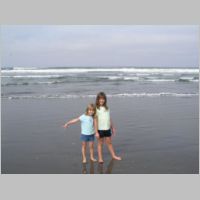
|
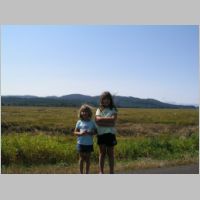
|
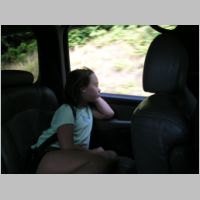
|
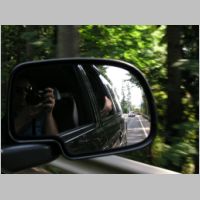
|
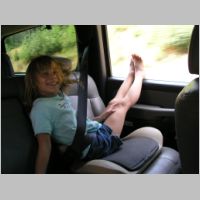
|
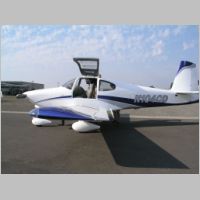
|
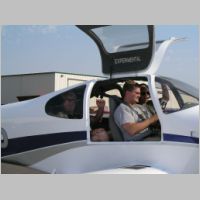
|
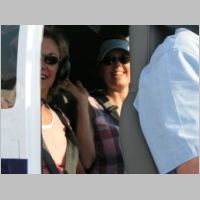
|
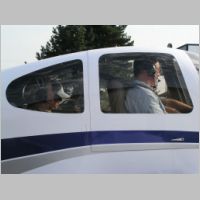
|
| Later
Saturday night we met the families belonging to John Cox, Randy DeBauw,
and Eric Panning. Again, all fantastic people. I finally
got to give Randy a ride to repay his ride we took when he stopped by
our airport, and John the ride that he missed out on at OSH due to the
hustle and bustle and hassle. Everyone took a quick flight and
then it was off to Ed's for a fantastic supper. With all the
great company and great fun, I didn't realize that I had inadvertently
violated one of my cardinal rules of cross-country flying. At
supper, we had corn. 'nuff said, but that always leaves me
worried about the short-term outlook while flying. |
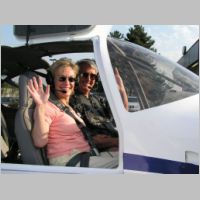
|
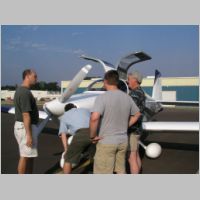
|
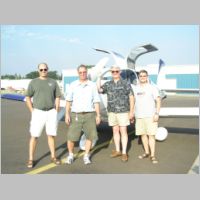
|
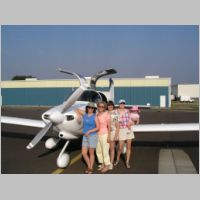
|
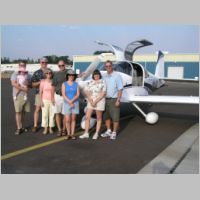
|
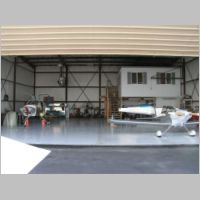
|
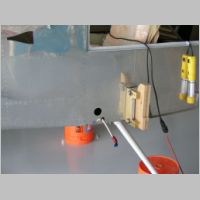
|
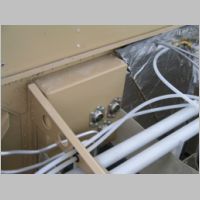
|
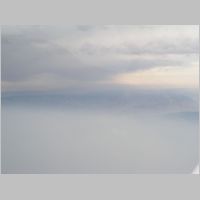
|
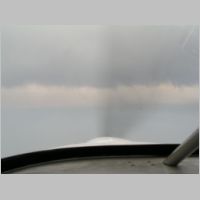
|
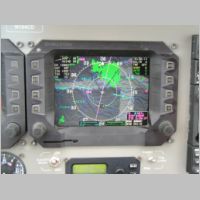
|
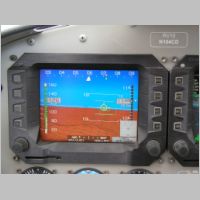
|
| On
the trip home, we asked to progressively be worked higher as required,
topping out at 13,000'. There were some thunderstorms in the
visible vincinity of us while we were flying near the mountains, but
nothing was actually in our path. Then, we had one section where
some dark clouds loomed ahead, at what seemed to be very near or
slightly above our altitude of 11,000'. They appeared as a green
blob on our screen. Being not "fool me twice" stupid, I told
everyone to crank on their seat belts a bit and ensure they were tight.
Sure enough, even though it wasn't actually raining out of that
cloud, as soon as we hit the green blob, we started getting tossed
around a bit and having some altitude fluctuations. The AP would
keep us headed back to our altitude, but our airspeed would drop off as
it was in a climb. Performance wise we were about 160kts @ 9.4
gph, so that was looking good. You can tell from the photos that
at times it really seemed like IMC conditions in the mountains.
There were numerous other planes asking for smoke deviations, and
it was definitely and drastically affecting what we could see.
Usually we could still see off in at least one direction though. |
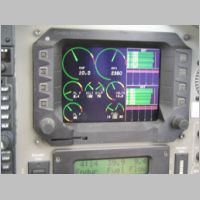
|
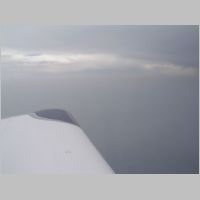
|
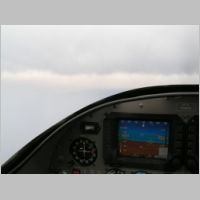
|
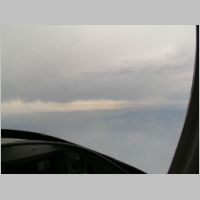
|
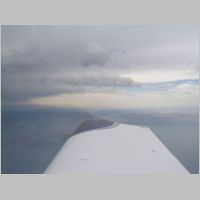
|
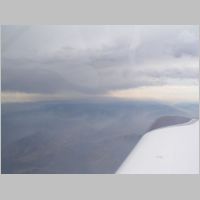
|
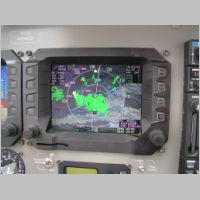
|
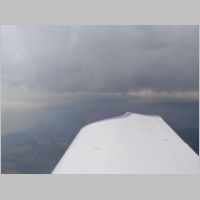
|
| Below are a couple of photos of smaller fires that we passed very close to. |
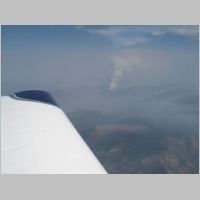
|
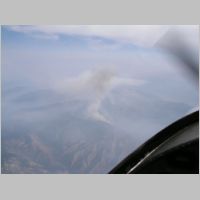
|
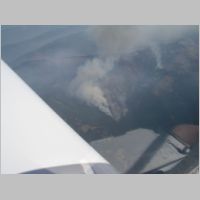
|
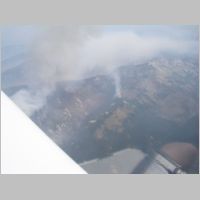
|
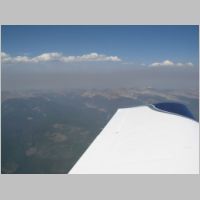
|
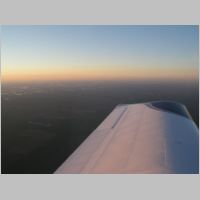
|
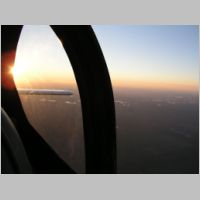
|
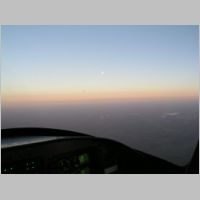
|
| We
flew the leg from KHIO (Hillsboro, OR) to 6S8, a small airport near
Billings, MT that had cheaper fuel. They had 2 fuel services, one
being 20cents per gallon less than the FBO, but after finding out the
FBO had a courtesy car, I decided I'd rather give the money to a good
FBO providing good services. Then it was off for a little more
than 700 miles remaining. We filed for KABR again, just because
the guys at Quest had been good last time, figuring I'd rather give a
little more for fuel but have good service, than search out a cheap
fuel stop that I wasn't planning to visit. But, our fuel burns
were looking very good, and our previous leg things were working out
really well with winds, groundspeeds, and fuel, so we decided to push
on. It was a little unnerving, looking ahead at the remainder of
the flight. It was an IFR flight, in VFR conditions, but it would
end at night. We calculated that if we flew to our home airport,
we'd have 700+ miles in on that fuel fill, but at current burn rates we
should have 1.25 hours of fuel remaining upon landing. So working
the numbers, it was very trustable, and well within the FARS. The
problem? Well, I haven't flown a leg of an X/C trip before where
we ended with that little fuel. Knowing that on the other legs I
had been comparing my totalizer burn rate with my actual burn rate and
coming out almost perfect, I decided that 1.25 hours should be good for
reserve. Also, as we got closer to the MSP airspace, there were
lots of alternate airports to stop at, and our forward speed was going
very good. Sure enough, we saved the time on the ground and
rolled in with about 12.5 gallons remaining. So in one day, we
had flown from nearly the West coast, all the way to our home in
Wisconsin. More than that, we had been able to take a 3.25 day
weekend and do a 2600nm cross country trip, and visit lots of great
people. I think the fuel cost came out near $850, so running LOP
saved a couple hundred bucks on the trip too. All in all it was a
great weekend, but much too short. We'll have to go back there
real soon when we can stay a while. |
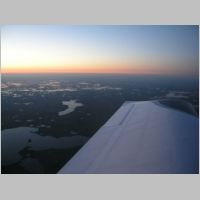
|
|
|
|
















































































